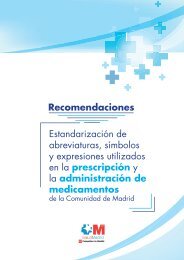lKd7nD
lKd7nD
lKd7nD
Create successful ePaper yourself
Turn your PDF publications into a flip-book with our unique Google optimized e-Paper software.
our minds, as much great art does, but even more so. A recent<br />
article published in the journal Science identified an increase in<br />
empathy, social perception, and emotional intelligence among<br />
test subjects after they read literary fiction. To explain this effect,<br />
the researchers hypothesized that “literary fiction often leaves<br />
more to the imagination, encouraging readers to make inferences<br />
about characters and be<br />
“Reading literature in<br />
translation requires us<br />
to open our minds, as<br />
much great art does,<br />
but even more so.”<br />
sensitive to emotional<br />
nuance and complexity”;<br />
what, then, of the leaps<br />
of imagination required<br />
when confronting much<br />
less familiar characters<br />
and situations, and<br />
attempting to perceive<br />
their cultural and linguistic<br />
context, further extending the empathic stretch Whether the<br />
empathy effect of foreign fiction is greater or not, its translators<br />
inherently multiply the opportunities for reading literary fiction<br />
by unceasingly contributing to the array of works available to<br />
read in English. For decades, classics in translation like Anna<br />
Karenina and The Stranger have been included on many a high<br />
school English class syllabus, not to mention The Iliad and The<br />
Bible. Now graduates can find South Asian and Egyptian and<br />
Vietnamese masterpieces on the shelves as well.<br />
The Center for the Art of Translation is committed to<br />
bringing these voices into English, often for the first time,<br />
through the now biannual Two Lines journal of world writing<br />
and through our newly launched Two Lines Press. Our interest<br />
goes beyond publishing, however, to the various ways in which<br />
translation can touch society, as an art form, as an education<br />
tool, and through community events. As communities in the U.S.<br />
become more diverse, it is no longer just the borders where we<br />
need metaphorical bridges; more and more these gaps need to<br />
be spanned within our own neighborhoods. Ironically, we have<br />
found that translation allows us to know each other better, and<br />
therefore feel more connected to one another, here at home.<br />
In our Poetry Inside Out (PIO) education program, which<br />
takes place in the often linguistically diverse classrooms of<br />
our public schools, we teach students to translate great poems<br />
from their original languages into English, and the poems we<br />
select reflect the participants’ cultural and linguistic heritage.<br />
In San Francisco, where there is a robust Japanese-American<br />
community, students might begin by translating one of Matsuo<br />
44<br />
National Endowment for the Arts



